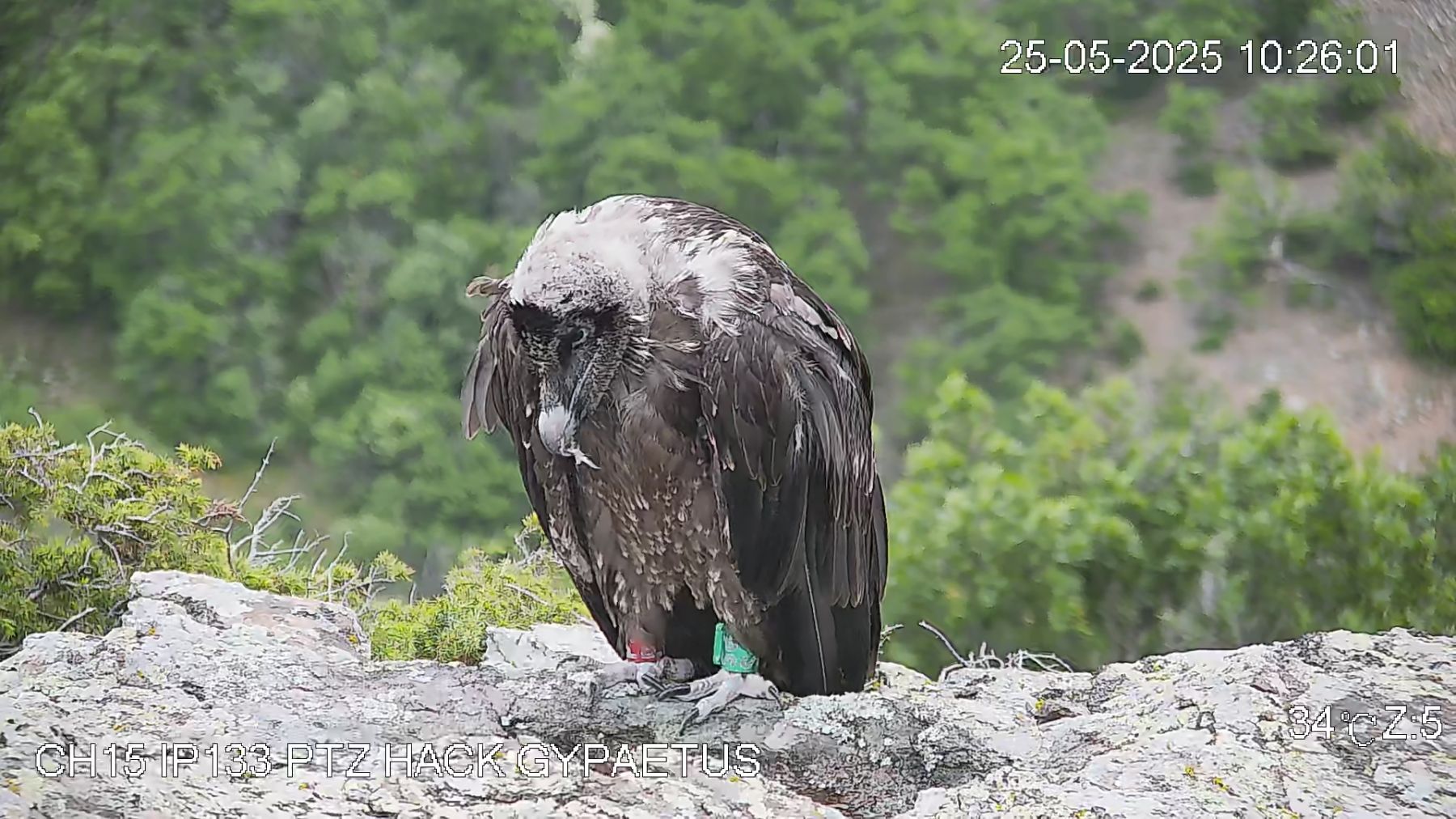
This is a photo that got us all here at the Vulture Conservation Foundation very excited, a young bearded vulture crossing the Bosphorus separating Europe and Asia and heading into Anatolia, seen on Saturday 29 September this year.
Why the excitement?
During their first years particularly in their second calendar year, young bearded vultures are known to travel great distances, just this year we heard of a wildborn bird that headed north from the Alps to the Netherlands and northern Germany, and in 2016 one had flown to south Wales in the UK. So far, most of the tagged birds traveling around Europe tend to head north, and travels east are a rare occurrence, even though captive-bred bearded vulture Adonis did travel all the way to Belorussia, Ukraine and Romania before returning to the Alps. However, observations of the species crossing the Bosporus are unheard of, at least in recent times, so when we were sent this photo by Turkish photographer Ihsan Eroglu we were all excited. The closest breeding grounds to the Bosporus are the Austrian Alps, Crete, or the mountains of Anatolia – with Uludag mountain, about 80km away, being the closest to the Istanbul metropolis.
Our bearded vulture team here estimated that the young bird photographed was a bird from the 2017 breeding season, based on the pointed ends of the flight feathers, suggesting it was the bird’s first plumage. But where did it come from? Did it come from Crete? Unlikely as this is an isolated island population. Further afield from the Alps? Or was it a bird from the Turkish population that crossed to Europe at some point without being detected and then returned to Asia? We simply don’t know and this mystery that adds to the excitement of the spotting.
This spotting is the first such recorded migration of a bearded vulture across the Bosphorus in recent history.
Bearded vultures in Europe and beyond
The bearded vulture came close to disappearing from the skies of Europe, and the extinction of the species in Alps and their remarkable comeback since reintroduction efforts began in 1978 have been well documented.

However, the decline of bearded vultures is not a historical tragedy – the species disappeared from the Balkans as recently as 2006, in the early years of the 21st Century.
Overall, the European populations have increased in the last few decades, especially in the Alps and Pyrenees, and the species has also been reintroduced to Andalusia. In Turkey the species has not been censused properly, but it is thought there are around 160-200 breeding pairs, mostly in the east of the country.
Connecting populations

With all our bearded vulture conservation projects, monitoring the species with the International Bearded Vulture Monitoring Network to reintroduction in five different regions of Europe from Spain to Austria, to coordinating a captive-breeding network, we aim to restore the species to much of its former range to create a continent wide meta population connected to each other.
Seeing a bird migrating through Istanbul is a good sign, maybe we are edging closer to achieving our conservation aims for the species.



